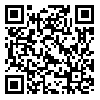
 , Seyed Ali Hosseini1
, Seyed Ali Hosseini1 
 , Nazilla Akbar-Fahimmi2
, Nazilla Akbar-Fahimmi2 
 , Masoud Salehi3
, Masoud Salehi3 
 , Sahel Hemmati4
, Sahel Hemmati4 
 , Mohammad Moosavy-Khatat
, Mohammad Moosavy-Khatat 
 5, Amin Shahrokhi1
5, Amin Shahrokhi1 

2- University of Social Welfare and Rehabilitation sciences
3- Tehran University of Medical Sciences and Health Services, Department of Biostatistics
4- University of Welfare and Rehabilitation Sciences, Social determinants of health Research Center
5- University of Social Welfare and Rehabilitation sciences, Tehran, Iran.
Objective: The of Aim of this study was investigation modified constraint induced movement therapy on grasp in affected limb in children with hemiplegic cerebral palsy.
Materials & Methods: In this study, 21 children and available clinical criteria for entering the study were selected randomly to balance the two groups were divided into experimental and control. Common Practice in Occupational Therapy 6 weeks for both groups were equally and intervention group 3 hours daily was used constrain induced movement therapy methods. Quality of grasp based on the quality of upper extremity skills test (QUEST) was evaluated. Statistical tests Kolmogrov - Smirnoff, Chi square T test and repeated measurement to analyze the data was used.
Results: 11 children in the experimental group (7 girls, 4 boys) with mean age (47/17±55/46) months and 10 children in the control group (5 female, 5 male) with mean age (19/19±10.48) months were studied. statistical analysis between group by using independent T-test is significant difference after 6 weeks intervention(P<0.05) and repeated measurement is significant difference in 2 weeks after intervention & 2 week second (P>0.05) and statistical analysis of weight-bearing T-test was not significant (P>0.05) and repeated measure pre-test and the comparison between the first two weeks and the first two weeks and two weeks a second significant difference was observed (P0.05).
Conclusion: This study showed that modified constraint induced movement therapy could be effect weight bearing, but has no effect on the protective extens.
Received: 7/12/2010 | Accepted: 12/04/2011 | Published: 6/01/2014
| Rights and permissions | |
 |
This work is licensed under a Creative Commons Attribution-NonCommercial 4.0 International License. |
